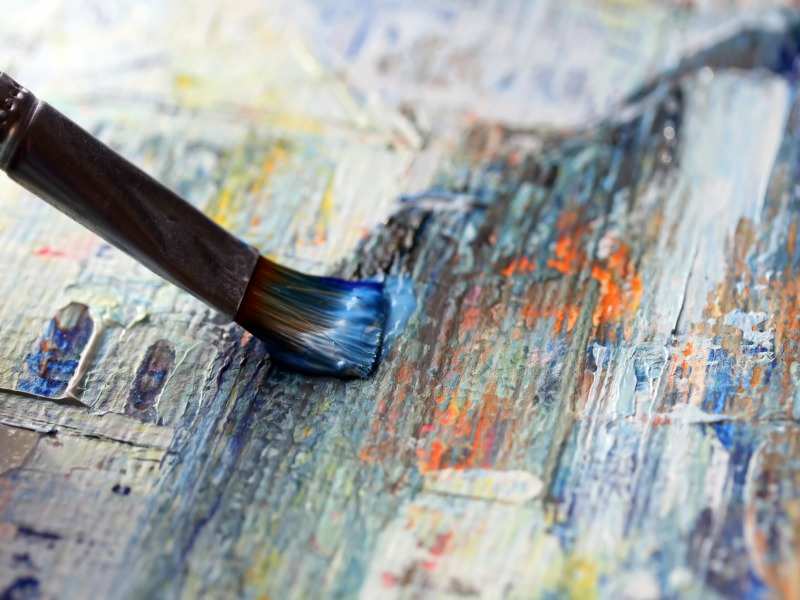 For artists and designers, the days of having to schlep all their artwork to brick-and-mortar galleries, just to sell a few prints, are passé now. Today they can meet buyers from all across the world at virtual marketplaces to sell their creative work like
For artists and designers, the days of having to schlep all their artwork to brick-and-mortar galleries, just to sell a few prints, are passé now. Today they can meet buyers from all across the world at virtual marketplaces to sell their creative work like They no longer have to invest time and money building their own stores as e-commerce websites have mushroomed, which allow them to reach a wider market and sell their designs in a variety of products. It's mostly free to set up, and the products are produced, shipped, and managed for artists - leaving them with only the designing part to do.
Online marketplaces for authentic and affordable art are witnessing surging demand due to convenience and flexibility they offer to consumers and businesses alike. These companies are making the process of discovery easier and buying faster as they have taken a digital-first no-inventory approach to selling art.
E-commerce is at the heart of this resurgence for domestically produced products in India that for years have had a hard time finding buyers. More importantly, these online players are empowering artists to take charge of their art business, and to not let others dictate whether or not their work is good enough to be sold. A majority of customers buying art online are under 35, looking for fashion and art they can relate to and that cannot be found in stores.
Print-on-demand websites are getting popular globally for their ability to put an artist into the manufacturing market quite easily and quickly. All they have to do is upload their work and, in some cases, set prices. Everything else is done for them – printing their artwork on a range of lifestyle products, including apparel, home decor, technology accessories, and wall art. Leading-edge print-on-demand technology enables production individually for each consumer.
And thanks to the surge in these online marketplaces combined with the power of social networking, amateur artists can now present their art online, bypass the limitations of search engines and bulk art/artist websites, cultivate their own followings and ultimately make sales.
Enterprising artists are regularly attracting hundreds of thousands of followers. Since artists now have to focus only on designing and spreading their collection link online, those who do it well, end up raking anywhere between $800 to $4000 every month. The highest selling artists post regularly, maintain consistent and engaging dialogues, provide insight not only into their art but also into their lives and adventures as an artist, and are good about interacting with their fans.
We are not just seeing changes for how art is sold, but also changes to what is bought, at what price points it’s bought, why it is bought and by whom. The ability of online art platforms to empower the public as tastemaker and democratize art is an example of one such change, one which has many positive outcomes: for the public, who will be able to decide what makes the cut; for artists, who desire a level playing field; and for culture, which will become far more representative of all society, not just the wealthy classes.
The biggest difference between major players in this space is the pricing systems. With some, the artist decides his/her own price above the base price and they pocket the difference. With others, prices are pre-determined by the site and artists make a fixed percentage of each sale. In almost all cases, the artist retains all rights to the artwork and they grant the online marketplace a non-exclusive license to use the artwork. There are also differences in terms of analytics provided, payment mechanism, quality and product standards, and most importantly traffic on website.
Reportedly, online sales in visual art market make up just 1.6% of total global sales, which is all set for a change.
Lot of money has gone in online platforms and a lot of investments have taken place. Artspace received $8.5m of investment in 2013, while Paddle8 received $6m of investment, Artsy raised $5.6 million, Society6 & Saatchi Art was acquired by Demand Media. Last month, a major player in the online art space Redbubble raised $15.5m from some of the top notch investors in the Silicon Valley. One thing is for sure that globally there's a lot of investor money being poured into online art marketplaces right now. And secondly, the online market for art related products is growing and there's sufficient evidence of its success that brick-and-mortar galleries need to be paying attention.
(The author of this article is Bharat Sethi, Founder & CEO, PosterGully)
(Image: Thinkstock)
